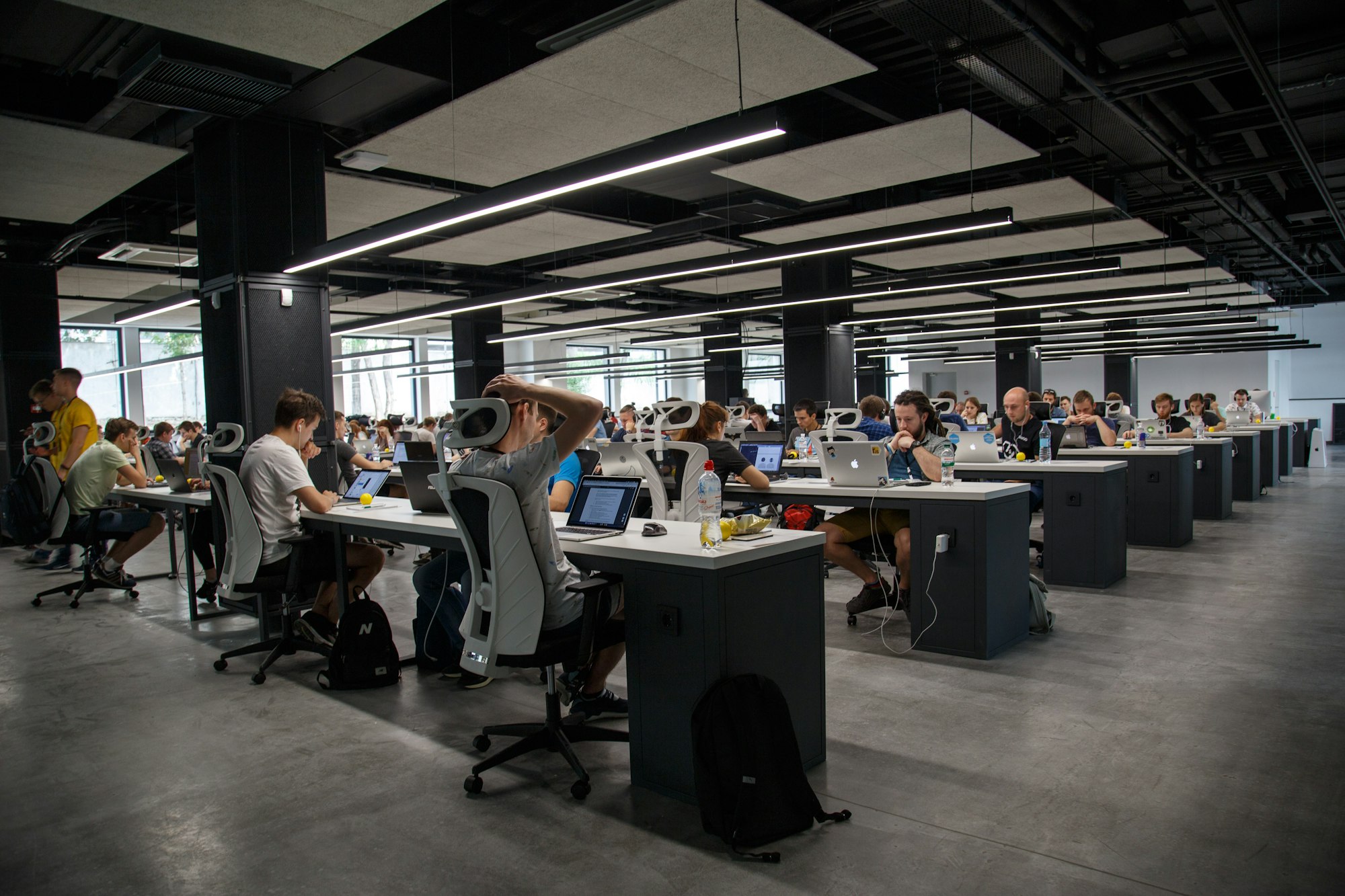Office Space

Ever since I've been in the professional workspace the open office design is all that I have known. For years now we have had research that shows that the open office is a trap. As I think about how to build my next company the question of how to build the office environment is large in my mind.
A brief history of my workspaces
I started my first company, an Internet and network consultancy in 1997. I worked primarily from home. Over time, I upgraded my desk; acquired a bigger monitor (ultimately up to a 21" CRT, which was huge and heavy) and a great keyboard. Working from home I had few distractions.
After year or two, I started to have clients who wanted me on site. I worked for a small startup from 1998 to 2002 in their first two offices. They had a standard cubicle set up in the first office. As I was part-time, I occupied a desk in the corner of the one office, which was the founder and CEO's. It was awkward and disruptive. I never knew when he would start talking to me, instead of on the phone.
That company moved to a larger office in either 1999 or 2000. I then occupied a corner of the conference room. This was very strange when meetings were occurring in which I wasn't involved. I can't recall if I used headphones, but I imagine I must have had to do so! One big advantage was I did hear about more of the business (I couldn't avoid it). In addition, the patio was outside the conference room, so when the lead business person (most of the company was technical) went for his smoke breaks, I could jump up, follow him and get some undivided attention. I learned a lot during these breaks.
After college, I worked at Deloitte Consulting. This exposed me to a ton if environments in short order. As temporary help, we often camped in conference rooms, elbow-to-elbow, with only our laptops. We brought everything we needed each day in a bag. No photos on the desks here! On some projects I received a cubicle; often with people I didn't know in a city far from my house. From week to week you didn't always know where you would be working. I found this very distracting and didn't stay in consulting for very long.
When I moved to Green Dot we had cubicles. That's all about you need to know. Standard 6-foot ones with bad desks. The environment was very noisy. I used to consume quite a few sodas at the time and a coworker of mine loved to joke about how she could hear me opening each can. Once she snuck up behind me to open her can of soda in my ear. We did get benefits at Green Dot of comradery, information sharing, etc., but it was distracting.
At AT&T Interactive, I started with a standard cubicle. About six months or a year in, my team was moved to a new layout with very low cubicle walls (more like 12 inches). People were unhappy to put here, but I really enjoyed it. It was easy to collaborate and know what was going on in the business. On the downside, everyone knew when you had a bad conference call.
When I started Wallaby Financial, it was back to working from home for the part for the first six months. Then we moved into a classic startup office. It was a converted loft space with high ceilings, etc. We simply lined up IKEA desks into a long row and sad side by side. It was also a ton of fun, but there was zero privacy and plenty of distraction.
After Wallaby was acquired by Bankrate I had the opportunity to design and build an ~8,000 square foot office the company in a new building. We build a few offices (five) for VPs and guests and a low cubicle set up for everyone else. The design was like a dogbone from above. Everyone had a four-foot desk that curved around them. No one had to look directly into anyone else's eyes. I like this design a lot, although I have to admit that I had one of the offices.
It was great to have an office. I could close the door and focus. I could have private meetings without scheduling a room. I had private whiteboards I could leave filled with content for days. I had photos and desk toys and all the like.
To Office or Not to Office
Despite the research quoted in the linked New Yorker article above and other articles, open offices continue to be the rage. From my visits to Wework facilities and other co-working spaces, it appears that the open desk work area continues to be the primary setup.
This really has to do with cost more than anything else. Providing each employee with a private office is expensive! What is unclear, I suppose, to everyone is if this is actually false.
Let's say your cost per employee per month in open space for floor space is $360 (120 square feet by $3 per square foot per month). Let's assume for an office it's at least double: $720. Let's further assume you are paying this high-tech office worker $100,000 per year. We would need our worker to be about 5% more productive to cover the cost of the office.
I have no idea how to measure this. I will probably fall into the open office trap. It's what people are used to. It's cheaper. It's how offices are built. It's easy to just buy everyone noise-canceling headphones as a perk (which many companies do).
I can't shake the feeling that when we get the funds we need to build more offices inside our offices though. Where do you want to work?

